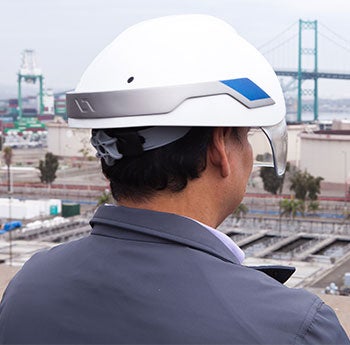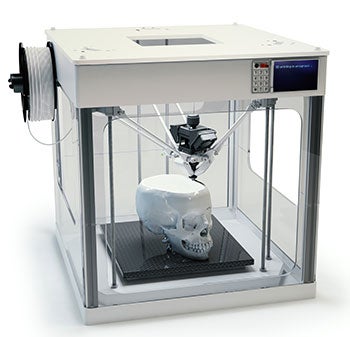New technology shows up on the construction site
Sometimes a single technology can have boundless applications. Health care is one of those industries known for its rapid development and adoption of new technologies, and some of that technology has potential cross over into the construction world, or has the potential to do so. Here are some of the tools already adopted in health care that could find their way onto the hospital construction site.
Robots on the job
Medical robots have been around for quite some time. The da Vinci Surgical System has been around since 2000 and, since then, the number of robots around the hospital have only grown. Autonomous mobile transport robots are used to deliver supplies inside the hospital, and robots used in labs manage, prepare and track specimen tubes throughout the testing process.
Around construction sites, robots such as semi-automated masonry (SAM) machines recently have been used to lay three times as many bricks as construction workers. The technology is designed to be used in conjunction with construction workers. The robot picks up bricks, applies mortar and places them in their designated location. Human hands handle the more detailed tasks, such as laying bricks in tricky areas and cleaning up excess mortar.

Augmented reality hard hats allow construction professionals to update and create models of projects in real time.
As more facility managers use building information modeling to build and manage health care facilities, mapping robots such as the Aerial Robotic Infrastructure Analyst developed by Carnegie Mellon University’s Robotics Institute and Northeastern University, could turn up in the construction industry more. The technology was developed for rapid infrastructure modeling and can take scope of large, hard-to-reach areas and create an instant 3-D model.
A new augmented reality
Doctors and professors working with the University of Maryland School of Medicine are working on progressing augmented reality in health care. Sarah Murthi, M.D., a trauma surgeon at the R Adams Cowley Shock Trauma Center in Baltimore, says a pair of smart glasses with all the necessary patient information embedded into the device would mean that doctors would not have to divide their time switching back and forth from patient to computer screen — a pet peeve for both patients and physicians. Murthi and some of her colleagues hope to start testing smart glasses in simulated hospital scenarios this year.
On the construction side, Daqri, a developer of augmented reality products, has launched the Smart Helmet. The high-tech hard hat incorporates Daqri’s Intellitrack software and uses data from the helmet’s 360-degree navigation cameras and inertial measurement unit to create a complex mathematical model. The augmented reality helmet can map out an entire construction site and allows workers to log construction data hands-free in real time.
Get it in 3-D printing
There are at least 12 things in medicine right now that we can print in 3-D. A heart valve that soon will be tested in sheep, collagen ears with built-in electronic components for superhuman hearing and medical devices are just a few of the phenomenal things being produced for medical use via 3-D printing.

Although 3-D printing has been around since the 1980's and is progressing rapidly in medicine, the construction industry is in the beginning stages of exploring its potential in building projects.
It will be interesting to see if the technology will find its way into the hospital construction world. A Chinese company created the world’s first 3-D printed apartment last year. The company, WinSun, used a proprietary 3-D printer to create the five-story apartment building, but an apartment building can hardly compare to the complex space needed for hospitals and other health care facilities.
Early reviews of this technology’s application in construction seem to have an equal amount of ups and down, however. While the sustainable qualities of reduced waste and being able to use recycled products coupled with the accuracy of 3-D printing weigh on the plus side. However, the high cost and limited number of materials that can be used in one composite will make a transition to large-scale hospital projects difficult.




